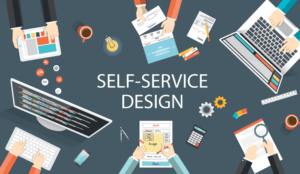Jacada shares their advice for creating an easy, branded customer experience that will set you apart from your competition.
It’s become clear that the contact center needs to offer customers a better experience. Customer expectations for help and support have increased dramatically, Gartner noted in 2019. And it didn’t matter what industry – expectations were high across the board.
More people today demand always-on support. They expect customer service to be available across all digital channels. And they want support to carry over from one to the other without any gaps.
A McKinsey & Company principal went a step further. He argued the entire customer experience needs to be “flawless”. Another word for flawless is perfect. Consumers today expect end-to-end perfection in exchange for long-term brand loyalty. Those are high expectations!
As the primary contact for service and support, the call center can enhance customer experience or create friction. Customer service automation can help any organization streamline the customer journey.
Creating a simple, branded experience is possible. Here’s how it works.
An Automated Journey Through the Customer Experience
A typical customer service experience can involve many touchpoints. Each represents an opportunity to engage but also potential pitfalls. By the time the customer contacts service, they’ve likely used at least one other channel.
Consider all the avenues at their disposal:
- Brand website
- Chatbots and virtual agents
- Live chat agents
- Social media
- Mobile applications
Each one has its strengths and weaknesses. For instance, chatbots are available around the clock but can’t resolve complex problems. Offering options lets customers choose their preferred way to interact with your brand.
For many people, that means delaying speaking to an agent as long as possible. According to a 2019 Drift survey, only 38% of people say they prefer to talk to a person rather than use a chatbot.
Bridging the Gap Between Touchpoints
The first step to resolving an issue often involves the customer attempting to fix things on their own. Using a digital channel can lead them to the brand website. Once there, a virtual assistant or chatbot troubleshoots the problem.
If the problem remains unresolved, then an agent steps in and assists the customer.
With customer service automation, this process is uninterrupted. The chatbot program alerts an agent which passes on the relevant information.
For example, chatbots may not have the authority to cancel payments or issue refunds. But an agent can step in and make those changes. Everything happens in the background. The customer can still resolve the problem without needing to call.
From the customer’s perspective, they explained their problem to a virtual agent. It was handled with a satisfying result. There were no phone trees to navigate or long delays to endure. A quick and easy resolution = a quality brand experience.
Giving Call Center Agents Important Context
Let’s say the chatbot wasn’t able to address the problem because it was more complicated. Customer service automation software could provide a direct link for the user to reach out to an agent by phone.
As the call connects, the system forwards all prior information to the call center agent. This includes a complete record of every exchange, giving the agent a crucial context.
By the time they get on the line with the customer, they understand exactly what the problem is and how to address it. This equates to faster resolution times. Both call center employees and customers will be happy with that conclusion.
Creating a Unified Customer Experience
There may be times when a mobile app or other digital platform represents a better choice to address customers’ needs. For example, automation lets users log in to their online account, bypassing the contact center. They can navigate digital channels without dropping their call.
When calling customer support, the user is greeted by a message giving the option of self-service. They can make changes to their account, schedule payments, troubleshoot issues. Right from their smartphone or tablet.
This can also be done with a call center agent on the line. There are certain scenarios where it can be hard to share information with people over the phone. For instance, it’s not ideal when your car breaks down, and you need to contact roadside assistance with freeway noise in the background.
The agent can direct the caller to a mobile app where all that information is easy to input. As soon as the customer fills in the information in the required fields, the agent gets it right away. Through it all, the agent can offer guidance and support during a stressful situation.
Personalization: The Secret Ingredient for Customer Satisfaction
No one wants to feel like they’re just a number or interact with a faceless company. Personalization has transitioned from a key differentiator into an expected offering.
A 2019 RedPoint Global Survey of 3,000 consumers across the US, UK and Canada revealed that 63% view personalized services as a standard offering.
The message is clear: incorporate personalized services or risk falling behind the competition.
Customer service automation paves the way for more tailored interactions. Every choice a customer makes offers insight into how they want to engage with your brand.
Artificial intelligence software can use those insights related to billing, service, and support. The software personalizes recommendations, creating a unique brand experience for every customer.
Customer service automation allows you to reduce call times, deliver quicker resolutions, ease agent workloads and make life easier for your customers.
Author: Guest Author
Published On: 14th Apr 2020 - Last modified: 30th Sep 2022
Read more about - Guest Blogs, Jacada















